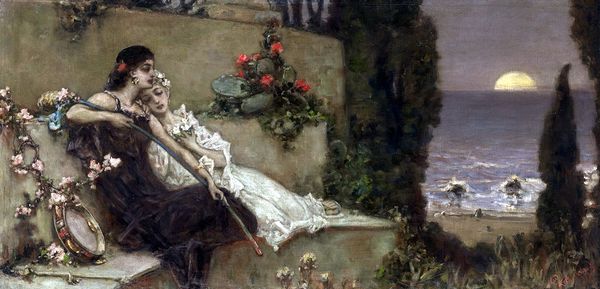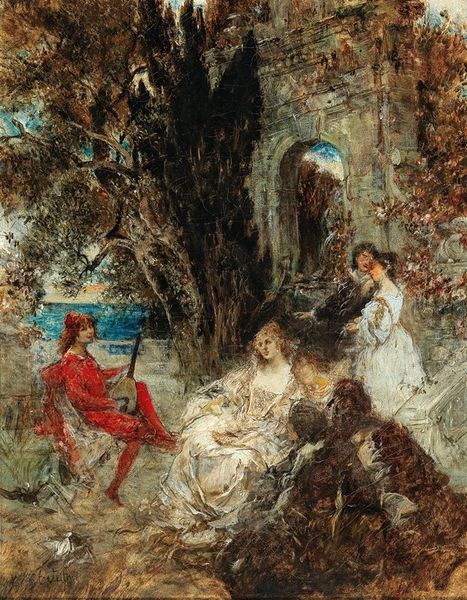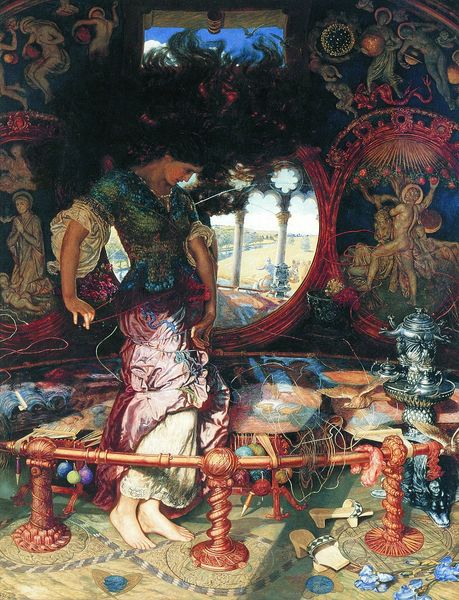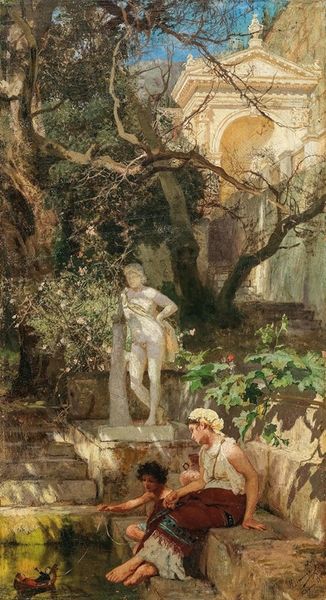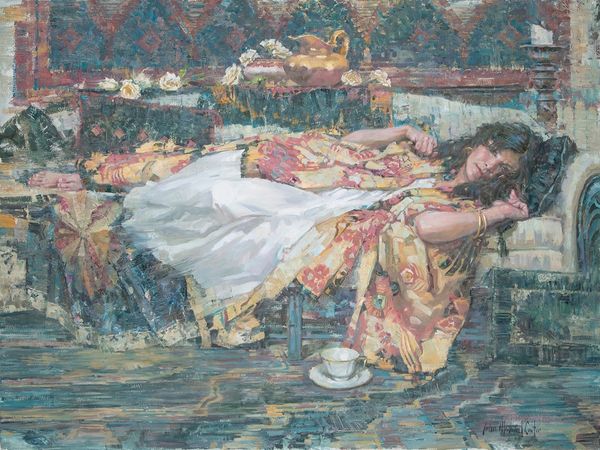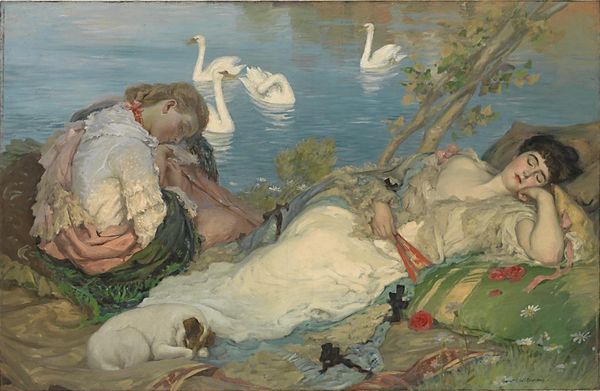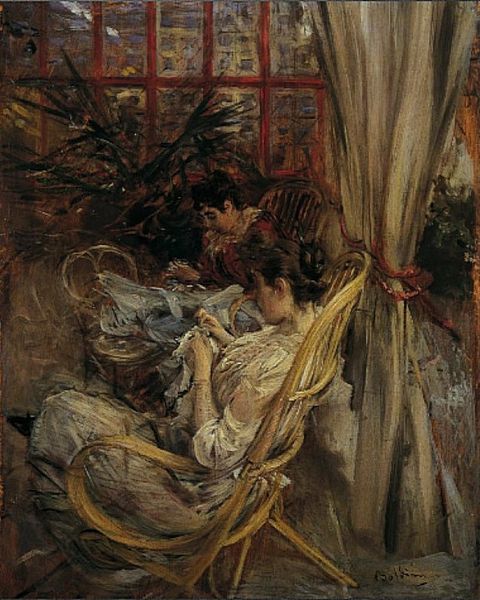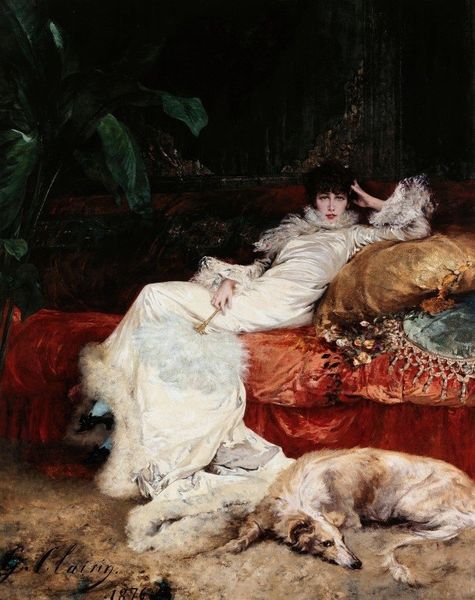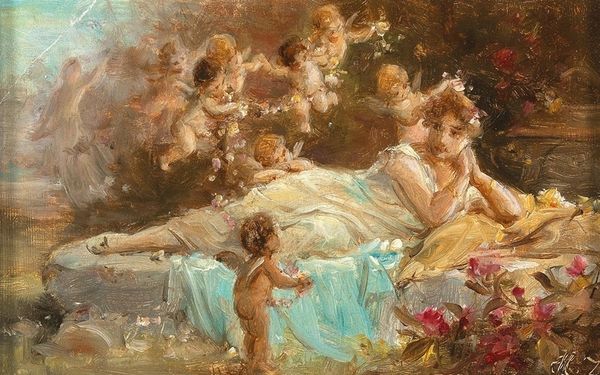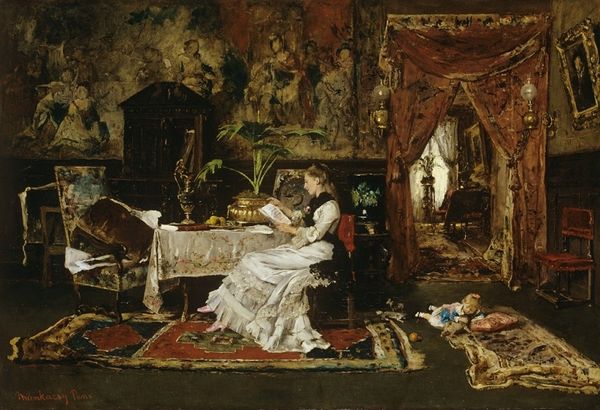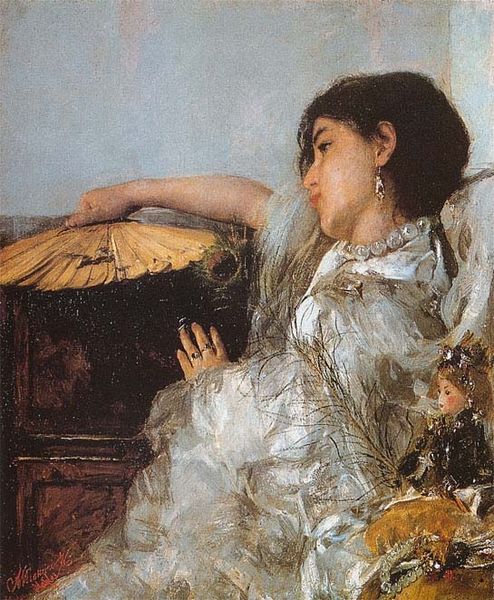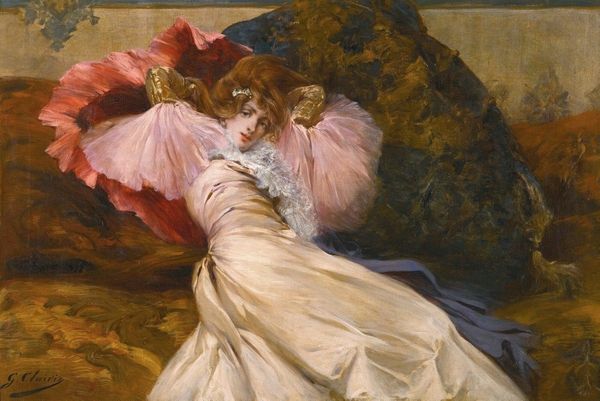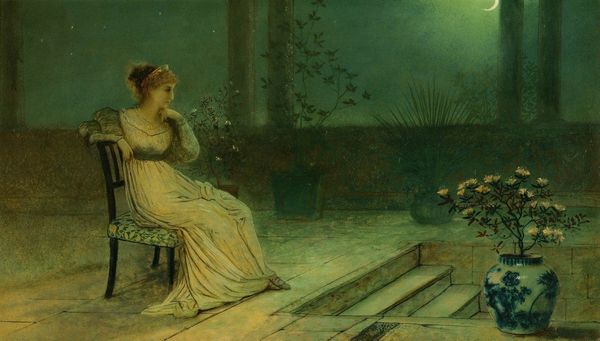
plein-air, oil-paint
#
table
#
impressionism
#
plein-air
#
oil-paint
#
landscape
#
impressionist landscape
#
oil painting
#
fruit
Copyright: Public domain
Curator: Eugène Boudin painted “Flowers and Fruit in a Garden” in 1869. What strikes you about it at first glance? Editor: What leaps out is the sheer abundance—it feels like the tail end of a harvest celebration, slightly past its peak, tinged with inevitable decay. The bright redness against muted greens evokes a very distinct sensory experience. Curator: Boudin was an early influence on Monet and dedicated himself to capturing fleeting moments of light and atmosphere en plein air. How do you see the process and materiality impacting the final piece? Editor: Consider that the textures are not precisely rendered but broadly suggested: think about the coarse weave of the basket, juxtaposed with the thick impasto of the petals. We are meant to infer, reconstruct the object, almost through touch. Boudin gives us the impression of what’s there more than describing exactly what’s there. The casual composition of table and stone also begs the question: are these found or built forms of domesticity, for what purpose were they fabricated? Curator: Yes, I agree. There is a transient beauty to this piece, the blooms are vibrant yet somehow ephemeral, underscored by the knowledge that these fruits and flowers will, in time, wither. Does it perhaps gesture toward themes of nature's cyclical processes, reflecting human mortality? Editor: Well, yes. Everything about it underscores that idea – that beauty, like material prosperity, is fleeting and must be seized while we can, while it is fresh and readily to hand. Curator: Seeing through a Materialist’s eyes gives me such a rich new way of thinking about temporality and abundance here! Editor: And you have offered me a glimpse into seeing and accepting the cycles of beauty, bounty, and change—something always needed for our work today.
Comments
No comments
Be the first to comment and join the conversation on the ultimate creative platform.
